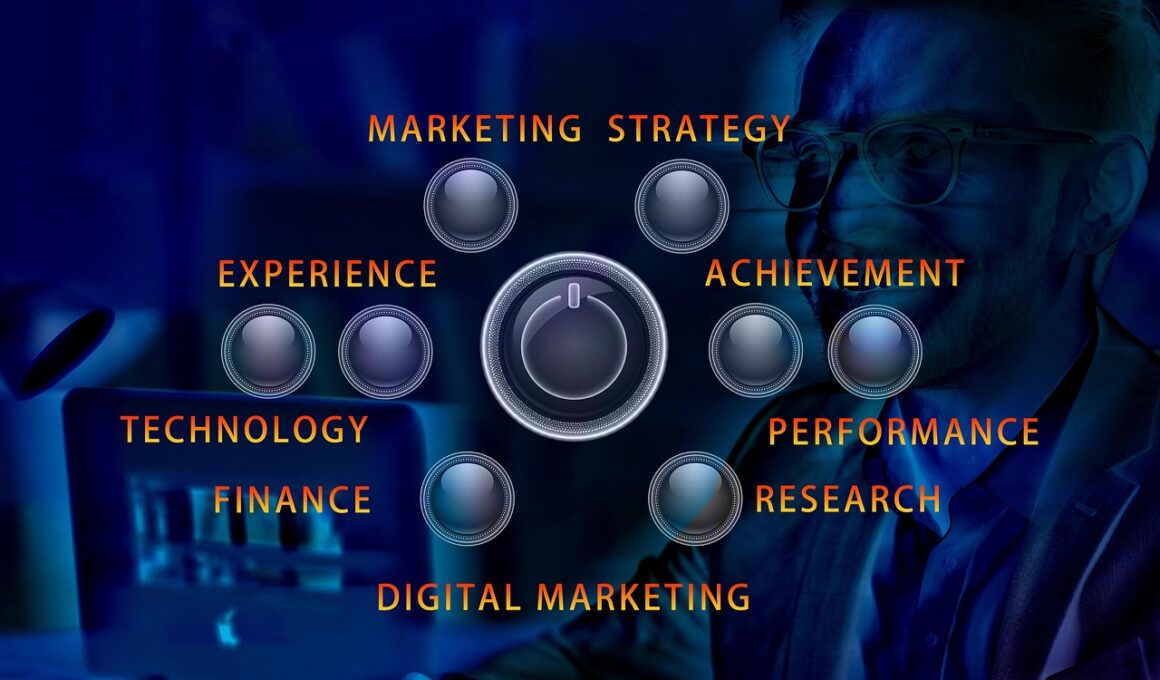Content Repurposing Strategies for Finance Marketers
Content repurposing is pivotal in the finance sector, allowing marketers to maximize the value of their existing content. By transforming articles, videos, and social media posts into various formats, marketers can significantly extend their reach and maximize engagement. For instance, take a well-researched whitepaper and create a series of blog posts that highlight its key findings. Each post can target specific audience segments, enhancing relevance. Another approach is to convert webinars into on-demand content. This provides an evergreen resource that’s readily accessible. Further, utilize infographics to distill complex financial data into easily digestible visuals. This strategy not only captures attention but also helps in explaining intricate topics succinctly. Moreover, leveraging user-generated content can offer fresh perspectives and increase credibility. Encouraging clients to share their stories can lead to testimonials that can be repurposed into various formats as well. Overall, these strategies can not only save time and resources but also create a more cohesive content marketing approach, driving home brand messaging and fostering deeper connections with target audiences in the competitive finance landscape.
Repurposing content also aids in improving search engine optimization (SEO) for finance marketers. By re-editing and updating existing posts with new keywords or related topics, marketers can boost visibility and search rankings. An excellent technique involves taking a high-ranking blog post and updating it with the latest financial statistics, making it current and relevant. This not only attracts new readers but also retains existing ones who may seek updated insights. Creating a themed content series is another effective tactic. Marketers can systematically explore various aspects of a financial concept, each week publishing content on different formats, like videos or podcasts. This keeps the audience engaged and invites continuous learning. Additionally, summarizing a comprehensive guide into checklists or how-to articles can also grab attention and simplify information consumption. Share these snippets on social platforms to encourage shares and backlinks. Influence often spreads through simple, informative micro-content. Lastly, using social media stories to share snippets of detailed reports can further drive curiosity, prompting users to refer to official documents or full articles accessible on the main website.
Maximizing Engagement through Diverse Formats
The diversity of formats available for content repurposing empowers finance marketers to connect with audiences in various ways. Infographics, for example, are perfect for sharing statistics about market trends, offering quick visual insights. Turning complex graphs from reports into simple images or animated videos can attract more shares and interaction on social media platforms. Podcasts have gained massive popularity in recent years, making them ideal for transforming written content into audio discussions. Conversations about economic forecasts or market analysis can be engaging, non-intimidating forms of content for potential clients. Furthermore, creating slideshows from research-led articles can provide valuable insights that can be shared during webinars or corporate training sessions. Email newsletters can also be crafted to highlight themes or excerpts from these revamps, ensuring that regular contact is maintained with potential leads. Also, adding CTA buttons within different content types encourages action and drives traffic towards deeper financial resources. Thus, these steps cultivate a stronger presence, ensuring that finance marketers remain top-of-mind when consumers seek financial advice or products.
Furthermore, employing social media effectively as a content repurposing tool is crucial in maximizing the reach of financial insights. Each platform offers diverse ways to present information. For example, a detailed blog post can be distilled into engaging tweets or Facebook posts that capture the essence of the message succinctly. Visual platforms like Instagram and Pinterest are ideal for sharing infographics or images that represent financial concepts visually. Marketers should tailor their content strategy to match the tone and expectations of each channel. When using LinkedIn, focus on professional articles that resonate with a business-oriented audience. Webinars can be promoted through short clips showing expert discussions and insights, arousing curiosity. Direct engagement through polls or questions surrounding financial matters can also help create real-time conversations with followers. This two-way interaction often fosters loyalty and brand advocacy. Regularly recycling older posts that received high engagement ensures that good content continues to offer value over time. Encouraging followers to share this information helps amplify reach and drives organic growth.
Leveraging Analytics for Continuous Improvement
Analyzing the performance of repurposed content is essential for finance marketers to understand what resonates with their audience. Monitoring metrics such as views, shares, comments, and conversion rates can reveal valuable insights. By diving deep into content performance analytics, marketers can determine which formats are most effective in communicating their message. For example, if infographics achieve higher engagement levels than whitepapers, marketers can prioritize their creation. User feedback also plays a critical role, helping marketers refine topics and presentation styles based on direct audience preferences. This learning ensures a continuous cycle of improvement and innovation in content offerings. Repurposing content with analytics in mind allows marketers to tailor their messages to current economic conditions or market sentiments. Active review sessions can promote agile strategy shifts, ultimately aligning content marketing efforts with broader business goals. Additionally, tools can facilitate the tracking of audience demographics, helping tailor content towards specific segments more effectively. This precision increases relevance and significantly improves lead conversion rates, thereby yielding better returns on investment for financial marketing campaigns.
Ultimately, the art of repurposing content in finance marketing lies in a strategic approach. Defining clear objectives for each content piece will help marketers assess their effectiveness. Are they aiming to educate consumers about investment strategies or promote new financial products? Setting these goals shapes content transformation and presentation. Content calendars can aid in planning repurposed content strategically over time, ensuring consistent engagement while minimizing redundancy. By clearly delineating how various content pieces interconnect, marketers can foster more informed audience interactions that reflect their expertise. Collaborations with influencers or industry experts can further enhance content authority and reach. Bringing in thought leaders to contribute can add fresh insights to existing content, increasing its value. Marketers should also consider interactive experiences, such as quizzes or financial calculators, as methods of content repurposing. These engaging elements improve user experience and drive deeper engagement. The continuous cycle of reformulating old ideas into new formats keeps the content marketing strategy vibrant, relevant, and aligned with audience interests in the evolving financial landscape.
Looking Ahead: Future Trends in Content Repurposing
The future of content repurposing in finance marketing is poised to evolve significantly, driven by advances in technology and changing consumer behaviors. Emerging platforms like TikTok and augmented reality applications present new opportunities for sharing financial knowledge in entertaining formats. Marketers must adapt their strategies to incorporate multimedia elements, such as short videos, which appeal to younger audiences. Additionally, trends towards personalization will likely reshape how content is created and reused, with tailored messages catering to specific demographics. Artificial intelligence can assist marketers in generating insights from consumer data, refining how content is repurposed to maximize engagement. Using algorithms to analyze engagement can optimize content formats further, ensuring marketing efforts are rooted in consumer preferences. Furthermore, sustainability in content creation is growing increasingly important, urging marketers to focus on repurposing existing assets rather than producing new content continuously. Repurposing not only saves time and resources, but it also supports a greener approach to marketing. As finance marketers look towards the future, embracing a flexible approach combined with ongoing analysis will be essential for staying relevant in a competitive landscape.
By adopting a forward-thinking mindset, finance marketers can not only enhance their current strategies but also cultivate lasting relationships with their audiences. The importance of storytelling within content repurposing cannot be overstated. Connecting emotionally with audiences can foster trust and loyalty, which is invaluable in the finance sector. As financial services become increasingly digitized, ensuring content remains relatable and accessible will be paramount. Redesigning traditional financial education through innovative methods will keep audiences engaged and open up new conversations around crucial topics. Leveraging user engagement data will allow marketers to identify gaps in their current content offerings. Creating relevant FAQs or myth-busting resources can address consumer concerns effectively. Additionally, gathering feedback through online surveys will guide marketers in crafting content that addresses audience pain points. The alignment of content repurposing efforts with consumer needs will create lasting impressions, facilitate informed decision-making, and enhance brand reputation. Ultimately, the goal is to create a symbiotic relationship between content and audience, ensuring finance marketers continuously provide value while adapting to a rapidly changing environment.


